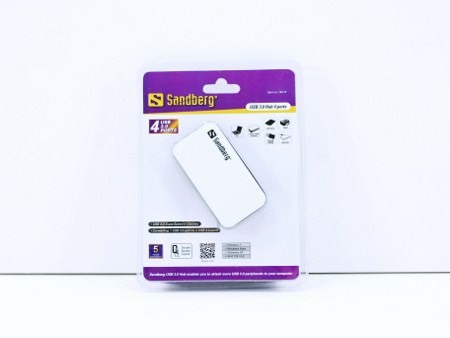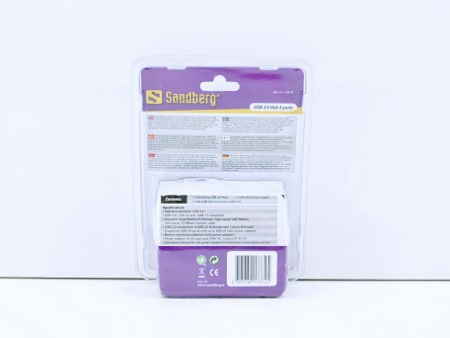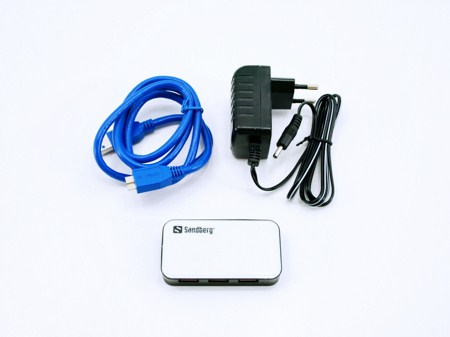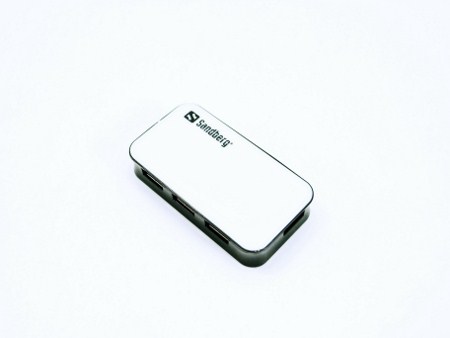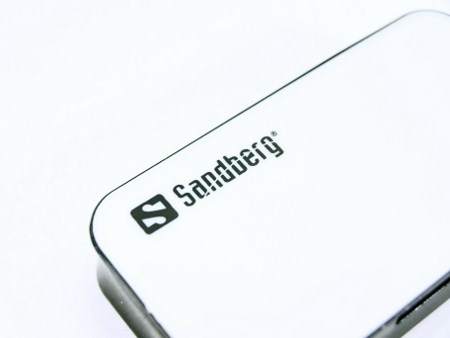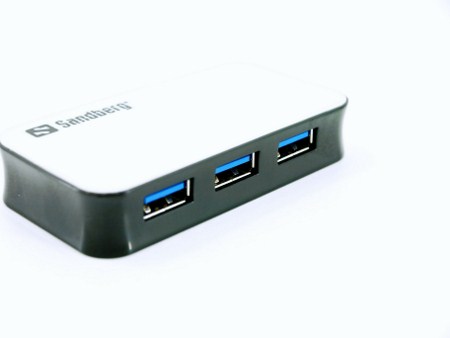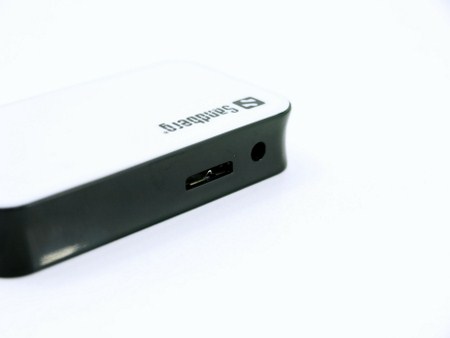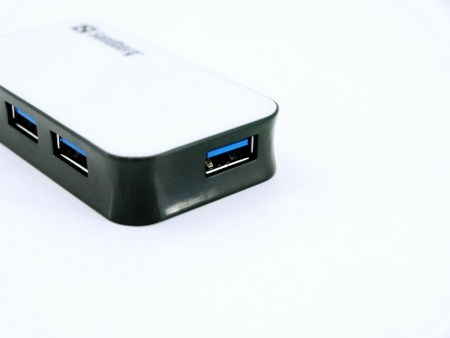INTRODUCTION
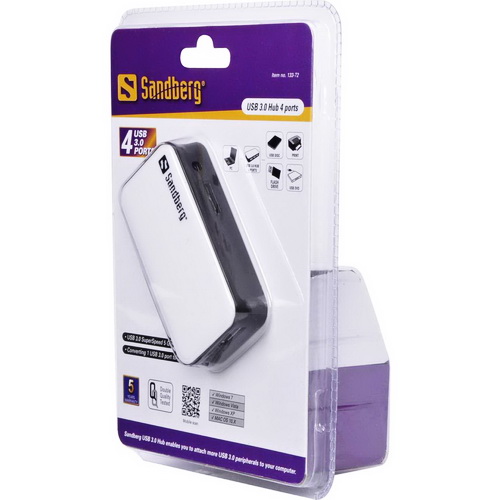
Each day that goes by more and more people i know either upgrade their systems with USB 3.0 compatible mainboards or choose the quite cheaper and easier path which is simply to install a PCIex USB 3.0 card. However it is because of that exact reason that many people keep asking me about which USB 3.0 hubs they should turn to in order to multiply their USB 3.0 ports without sacrificing speed. Now surprisingly enough most of the really popular and large manufacturers have yet to release USB 3.0 compatible hubs (for unknown reasons) however there are many such products in the market currently manufactured by smaller companies and the 4-Port USB 3.0 Hub we have here by Sandberg is one the those.
Sandberg A/S is a Danish company with a clear ideology: We want to make it easier to get hold of computer accessories. Everyone should be able to find the right accessories in the shop and get them to work once they've got them home without the need for specialist knowledge. The basic idea of Sandberg wanting to make things easier for both consumers and dealers has imbued the spirit of everything that Sandberg has done since 1985, when the company was founded by the two brothers Martin Hollerup and Erling Hoff Petersen.
Come to think of it i was actually asked the same question (which USB 3.0 hub is best) for the first time roughly 5 months ago and so shortly after i managed to get the two latest USB 3.0 hubs to hit the market by Syba and Rosewill and placed them against each other to see which was better. Differences between USB 3.0 hubs are not usually not significant but since todays review is also about a USB 3.0 hub i thought it would be appropriate to compare it with the previous two but to do that all 3 hubs needed to be tested on the latest primary X79 test rig since the last comparison was done on our now secondary X58 test rig. Yes it would be possible to perform this comparison with our secondary test rig but i thought it would be best for every review related with performance numbers to be done on the X79 platform. However my assessment wasn't right on the spot so read on if you want to see why that was.
SPECIFICATIONS AND FEATURES


PACKAGING AND CONTENTS
The hub is placed inside a clamshell clear plastic package so you can see the unit from the front right next to several small icons showcasing what you can use the unit for, the OS requirements, Sandberg logo and the 5 years warranty.
A few words about the USB hub are present at the rear in 6 languages right above a list with the contents of the bundle and a table with the specifications of the hub.
Along with the 4-port USB 3.0 hub you will also get a 1m USB 3.0 cable and the AC power adapter.
THE SANDBERG 4 PORT USB 3.0 HUB
The Sandberg USB 3.0 USB hub is medium in size and measures 80mm in length, 43mm in width and 16mm in height. For me that's a good thing mainly because small USB hubs never stay where you put them.
The company logo is imprinted at the top left corner of the hub.
Three out of the four USB 3.0 ports are placed at the front side of the hub.
At the rear side we find the USB 3.0 host port and the AC power plug.
The fourth and final USB 3.0 port is placed at the far right side.
TEST BED

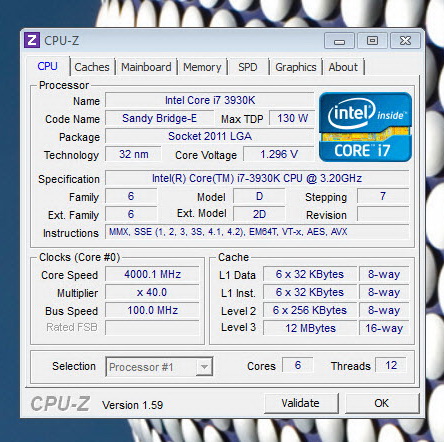
TESTING METHODOLOGY
Instead of using a USB flash drive to test USB hubs from this day forward we will be using the Zalman ZM-MH200 U3 dual bay docking station coupled with an Kingston HyperX 120GB SSD in an effort not only to simply max out the performance of any USB 3.0 controller but also to be able to perform every write test. Of course the testing methodology will be almost identical to the one we use when testing storage related devices. So we will be using our standard selection of suites such as the famous HD Tach RW (Long Bench 32mb Zones), HD Tune Pro (read/write -when possible- speeds), Sisoftware Sandra Pro (Read/Write -when possible- speeds), AID64 (Linear Read/Random Read), Crystal Disk Mark x64 (100MB-read/write speeds) and finally the quite old yet reliable ATTO 2.46 (Max Read/Max Write speeds). Every test was repeated for a total of 6 times and after that the average (not peak) performance numbers were recorded into our graphs.
Like always every test was performed in a fresh installation of Microsoft Windows 7 Service Pack 1 with every update installed up to April 20th 2012. For comparison purposes we also benchmarked our mainboard USB 3.0 controller directly (rear USB port) to see if and how much performance you lose (or gain) when using a USB hub instead.
TEST RESULTS - AIDA 64 / ATTO


TEST RESULTS - HD TACH RW / HD TUNE PRO


TEST RESULTS - SISOFTWARE SANDRA PRO / CRYSTAL DISK MARK X64


CONCLUSION
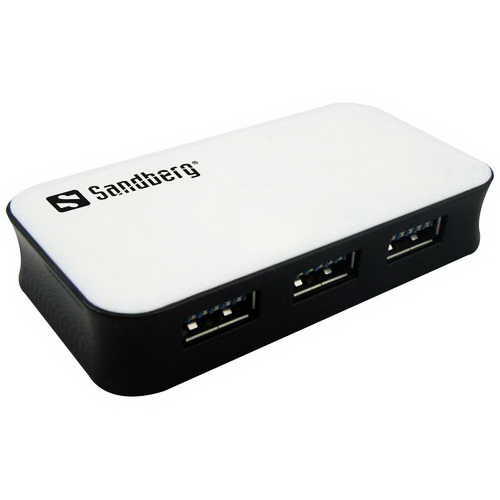
Throughout all tests the Sandberg 4-port USB 3.0 Hub was equal to the other two (won in some, lost in others) but in some occasions the extra power from the AC power adapter seem to be what allowed it to easily outperform the rear mainboard port something which i really didn't expect since the Zalman docking station comes with its own AC power adapter. However this is not the only thing we noticed since after being somewhat curious we did test the same Zalman Docking Station/Kingston HyperX 120GB SSD combo with our secondary Gigabyte G1 Assassin X58 test rig only to find that it performed roughly 15% better than with our primary Gigabyte X79-UD7 test rig which long story short means that the NEC USB 3.0 controller is slightly faster than the Fresco USB 3.0 controller. Of course this small detour has nothing to do with today’s review but i just thought it'd be nice to share our findings with everyone.
You can purchase the Sandberg 4-Port USB 3.0 Hub for around 25Euros inside the EU which is not a bad price for a USB 3.0 hub and puts it right in the lowest price segment in the market for similar devices. Performance is really the only thing that matters with USB hubs and so since this one performed on par and even better than the Mainboard USB 3.0 port i really have nothing bad to say about it (aside the fact that it’s mostly available inside the EU). I do wish that someday we will see USB hubs that can stick to walls so you can save space and in some cases have better/easier access to them but other than that Sandberg has launched yet another good product in the market which i strongly recommend and that's why it gets our Golden award.

PROS
- Performance
- Size
- 4 USB Ports
- Price
CONS
- Availability
